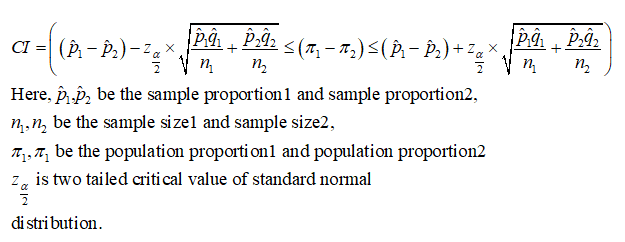Look at one of the marginal distributions described, and consider either value a success. Estimate the true population proportion for this value with a 95% confidence interval. (Hint: you may need to use the plus-four method if the sample size is too small.) We are now going to treat the sample as being two separate samples from two populations. One of the populations being compared is the population described in your conditional distribution (from problem 10). The other will be the rest of the sample. (An example is given below on how to form populations out of your Project 1 results.) Do these two populations have significantly different proportions successes? Use an appropriate significance test with.
Look at one of the marginal distributions described, and consider either value a success. Estimate the true population proportion for this value with a 95% confidence interval. (Hint: you may need to use the plus-four method if the sample size is too small.)
We are now going to treat the sample as being two separate samples from two populations. One of the populations being compared is the population described in your conditional distribution (from problem 10). The other will be the rest of the sample. (An example is given below on how to form populations out of your Project 1 results.) Do these two populations have significantly different proportions successes? Use an appropriate significance test with.
Two-Way Table:
|
Dim Light |
Bright Light |
Total |
|
|
4 |
9 |
13 |
Part A (first set of houses) |
|
7 |
7 |
14 |
Part B (Second set of houses) |
|
8 |
6 |
14 |
Part C (Third set of houses) |
|
Total: 19 |
Total: 22 |
Total: 41 |
|
Marginal Distribution:
Homes with dim lights: 19/41 = .46
Homes with bright lights: 22/41 = .54
Of the homes surveyed, 46% were dim lights and 54% were bright lights.
Conditional Distribution:
First set of houses (Part A) who had dim lights: 4/13 = 0.31
First set of houses (Part A) who had bright lights: 9/13 = 0.69
Second set of houses (Part B) who had dim lights: 7/14 = 0.50
Second set of houses (Part B) who had bright lights: 7/14 = 0.50
Third set of houses (Part C) who had dim lights: 8/14 = 0.57
Third set of houses (Part C) who had bright lights: 6/14 = 0.43
Of the homes surveyed, 46% were dim lights and 54% were bright lights.
Confidence Interval:
The form of the confidence interval is,
CI = Point estimate ± Margin of error
The approximate 100*(1–α)% confidence interval for the difference between two population proportions (π1– π2) will be obtained using the formula given below:

Step by step
Solved in 2 steps with 3 images









